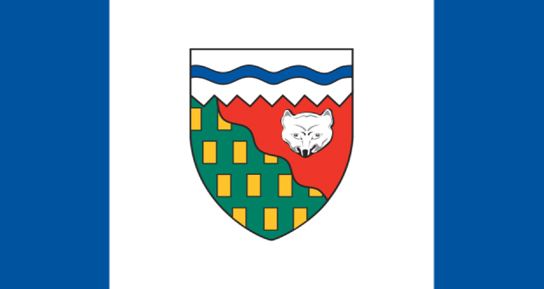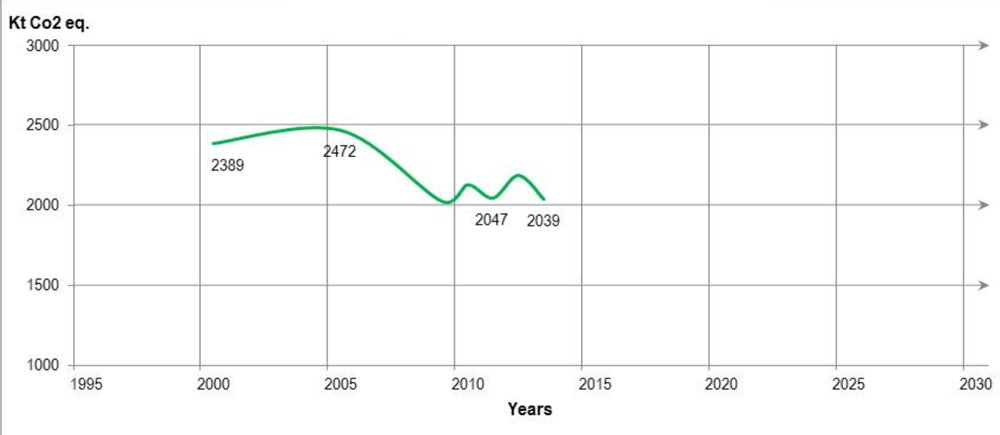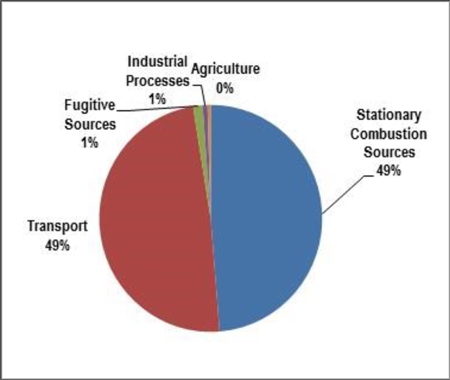Northwest Territories: Environment profile
Note
This information was current as of November 2015.

Northwest Territories (NWT) in brief
- Premier:
- Hon. Bob McLeod (Independent)
- Population:
- 43,600 (August 2014)
- Total Area:
-
1,346,106 km
2
- Land:
- 1,183,085 km 2
- Freshwater:
- 163,021 km 2
- Real GDP (gross domestic product) 2013:
- $3.6 billion (in 2007 dollars)
- Contribution to real Canadian GDP 2013:
- 0.2%
NWT Budget 2015-16
- Budgeted total expenditures:
- $1.6 billion
- Funds Allocated for the MoD:
-
$86 million
- 5.3% of total budget
Key environmental federal-provincial agreements
- NWT Devolution Final Agreement
- Canada-Northwest Territories Environmental Occurrences Notification Agreement
- Northwest Territories Protected Areas Strategy
- Mackenzie River Basin Transboundary Master Agreement
Climate change
- Department responsible for climate change:
- Department of Environment and Natural Resources
- Minister responsible for climate change:
- Hon. J. Michael Miltenberger
- Legislation and regulations:
- NWT Environmental Protection Act, Regulations under the Act include: Asphalt Paving Industry Emissions, Spill Contingency Planning and Reporting, Used Oil and Waste Fuel Management
Territory's Collectives GHG (greenhouse gas) emissions

Sources:
- National Inventory Report (2015)
Long description
Figure 1 is representative of all three territories’ (Nunavut, Yukon and Northwest Territories) collective GHG emissions. It presents a single time series line graph with the horizontal axis spanning the years 1995 to 2030 in five year increments. The vertical axis is Kt CO2 eq and spans the value of 1000 to 3000 in increments of 500. The starting value in 2001 is 2389 Kt and trends upwards to 2472 Kt in 2005. It declines to 2047 Kt in 2011 and 2039 Kt in 2013. The territorial 2020 and 2030 targets are not noted.
Territorial GHG emissions reduction targets
- Stabilize emissions to 2005 levels by 2015
- Limit emission growth to 66% above 2005 levels by 2020
- Return emissions to 2005 by 2030
NTW's sources of GHG emissions, 2013

Source: National Inventory Report, 2015
Long description
Figure 2 presents a pie chart of the distribution of major greenhouse gas sources in the Northwest Territories.
- Stationary combustion sources: 49%
- Transport: 49%
- Fugitive sources: 1%
- Industrial processes: 1%
- Agriculture: 0%
- Climate Change Strategies: Greenhouse Gas Strategy for the Northwest Territories: 2011-2015 (2011)
- Total NWT Emissions, 2013: 1,460 Kt (Source: Environment Canada’s National Inventory Report, 2015)
- NWT’s Contribution to total Canadian GHG Emissions, 2013: 0.2%
- Ranked 3nd lowest GHG emitter amongst Canadian provinces and territories in 2013
- GHG per Capita, 2012: 17.9 tonnes (all territories combined); ranked 5th highest GHG emitter per Capita, 2012
- The Greenhouse Gas Strategy for the Northwest Territories: 2011-2015 was released in December 2011. The strategy emphasizes support for biomass and renewable energy development to reduce dependency on diesel fuel.
- The 2011 Greenhouse Gas Strategy is supported by the 2012-2015 Biomass Energy Strategy and the 2012-2017 Solar Energy Strategy.
- The Biomass Energy Strategy specified 15 actions to increase the use of biomass fuels for space heating, ensure sustainable consumption, and create economic benefits. The Solar Energy Strategy outlined 9 actions to promote the use of solar energy technologies.
- In April 2011, the Northwest Territories along with the governments of Yukon and Nunavut, released the Pan-territorial Adaptation Strategy to ensure partnership, sharing of information, innovation, and technology, and coordination of climate change adaptation actions.
Water
- Departments responsible for water:
- Department of Environment and Natural Resources, Department of Public Works and Services
- Minister responsible for water:
- Hon. J. Michael Miltenberger
- Legislation and regulations:
- Mackenzie Valley Resource Management Act, Northwest Territories Waters Act, Water Resources Agreements Act, Pesticide Act, Environmental Protection Act, Department of Indian and Northern Development Act, Arctic Waters Pollution Prevention Act, Waters Regulations
- Water Strategies: Northern Voices, Northern Waters: NWT Water Stewardship Strategy (2010), NWT Water Stewardship: A Plan forAction 2011-2015 (2011)
- The Alberta-Northwest Territories bilateral water management agreement (2015) commits both governments to co-operatively manage water resources, focusing on aquatic ecosystems in the Mackenzie River Basin.
- Prior to the NWT Devolution Final Agreement, the NWT was responsible for the management of drinking water in the territory, while Aboriginal Affairs and Northern Development Canada (AANDC) was responsible for the management of all other water resources.
- The NWT Land and Resources Devolution Agreement (2013) transferred the management of public land, water and resources from the federal government to the government of the NWT as of April 1, 2014.
- Key water priorities include hydroelectric development, Mackenzie River Basin management, impact of oil sands development, and Slave River monitoring.
- The NWT Water Stewardship Strategy Action Plan describes 4 broad action items necessary to achieve the goals and visions of water stewardship in the territory: a cooperative environment for information-sharing and communication; multidisciplinary monitoring and research programs; tools for decision makers to make informed decisions, and the measurement and documentation of accurate, transparent results.
- In March 2007, the NWT’s 15th National Assembly passed a motion declaring water as a human right.
EC and NWT Collaboration on Water
- Mackenzie River Basin Board
- Water Quantity Baseline Network
- Water Quality Monitoring
- NWT Cumulative Impact Monitoring Program
- Municipal Wastewater Effluent Research
Biodiversity and wildlife
- Department responsible for biodiversity and wildlife:
- Department of Environment and Natural Resources
- Minister responsible for biodiversity and wildlife:
- Hon. J. Michael Miltenberger
- Legislation:
- Environmental Protection Act, Forest Management Act, Forest Protection Act, Species at Risk (NWT) Act, Wildlife Act
- Biodiversity and Conservation Strategies: Northwest Territories Biodiversity Action Plan (2004, 2006), Northwest Territories Protected Areas Strategy (1999)
| Extirpated | Endangered | Threatened | Special Concern | |
|---|---|---|---|---|
| Total: 23 Source: Species at Risk Public Registry January 2015 |
0 | 7 | 6 | 10 |
- The 2004 NWT Biodiversity Action Plan describes initiatives in NWT that touched on the goals of Canadian Biodiversity Strategy and the UN Convention on Biological Diversity. The 2006 Plan contains a gap/overlap analysis and recommendations for future actions. An updated gap/overlap analysis with recommended future action is planned for 2016.
- NWT adopted a new Wildlife Act in 2014. Its fundamental principles are the conservation (wise use and protection) of wildlife and incorporation of traditional values and knowledge, as the majority of harvesters in the NWT are Aboriginal. Under this legislation, land claims and self-government agreements provide the foundation for wildlife management.
- The NWT Protected Areas Strategy is a community-based partnership among Aboriginal people, federal and territorial governments, industry and non-governmental organizations that is establishing a new network of protected areas.
- Percentage of freshwater and land protected in NWT: 9.6% (Source: Canadian Environment Sustainability Indicators, 2013)
- Environment Canada maintains 5 protected areas in NWT, all of which are Migratory Bird Sanctuaries. They comprise over 2 million hectares of NWT’s protected lands and waters.